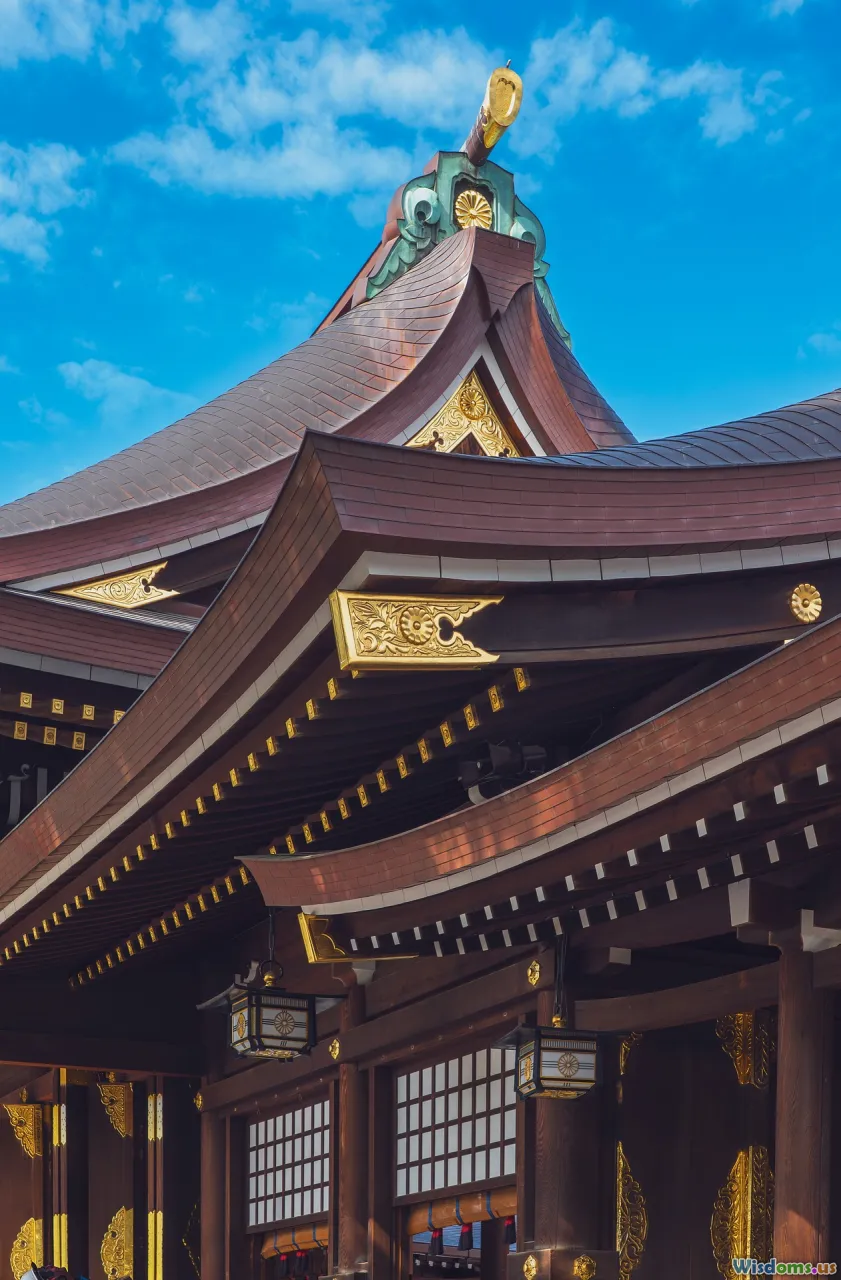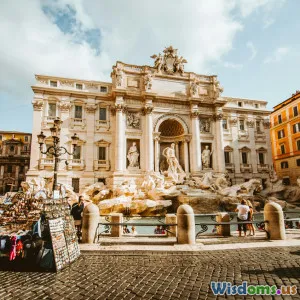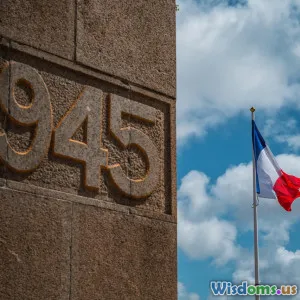
Five Political Reforms That Toppled Empires in the Modern Era
14 min read Explore five key political reforms that significantly contributed to the fall of major empires in the modern era. (0 Reviews)
Five Political Reforms That Toppled Empires in the Modern Era
Throughout the modern era, powerful empires have risen and fallen, invariably leaving imprints on world history. While wars and revolutions often claim the spotlight, it's the quieter machinery of political reform—the systemic changes to laws, governance, and power structures—that has triggered the collapse of seemingly invulnerable regimes. This journey explores five pivotal political reforms that redefined great empires. From the Ottoman Tanzimat decrees to the profound transitions that disbanded the Soviet Union, each reform illuminates how the quest for modernization and representation can unravel the old order, making way for a new era.
The Tanzimat Reforms: The Ottoman Empire’s Attempt at Modernization

In the mid-1800s, the Ottoman Empire was a sprawling yet unstable domain that struggled to keep pace with the rapidly industrializing West. Recognizing the threat posed by internal stagnation and external pressure, Ottoman leadership undertook the Tanzimat reforms (1839–1876), a set of sweeping edicts aimed at modernizing the state.
What Were the Tanzimat Reforms?
At their heart, the Tanzimat reforms sought to create equality among subjects, streamline administration, and modernize military and educational institutions. Key changes included:
- The Hatt-ı Şerif of Gülhane (1839): Promised security of life, honor, and property for all, regardless of religion or ethnicity.
- Legal changes: Introduction of a secular penal code, modern courts, and universal taxation.
- Military modernization: Conscription and reorganization of armed forces, mimicking European models.
- Administrative overhauls: Recruitment of skilled civil servants and the establishment of provincial councils.
Impacts and Unintended Consequences
While the Ottomans hoped these reforms would stave off disintegration and Western intervention, they inadvertently deepened divisions:
- Nationalism surged: Non-Turkish groups—Arabs, Armenians, Greeks, Serbs—used promises of equality as a platform to demand autonomy or independence.
- Elite backlash: Traditional Muslim elites considered the reforms a betrayal of Islamic principles.
- European manipulation: Britain and France leveraged new laws to intervene on behalf of Christian minorities, further weakening Ottoman authority.
By the late 19th and early 20th centuries, these very systemic changes—meant to save the empire—unwittingly fragmented its authority, setting the stage for its ultimate collapse after World War I.
The Emancipation of the Serfs: Russia’s Path Toward Revolution

Few political reforms transformed an empire as profoundly as Russia’s Emancipation Edict of 1861. When Tsar Alexander II abolished serfdom, freeing nearly 23 million serfs, he intended to modernize the Russian economy and socialize rural life. However, this all-encompassing decision became the linchpin of unraveling Romanov autocracy.
Serfdom’s Legacy and the Push for Change
Prior to emancipation, Russia’s agricultural economy depended on hereditary serf labor. The inefficiencies and unrest surrounding serfdom threatened military power and economic progress, especially after defeat in the Crimean War exposed the Russian Empire’s weakness.
The Reform
- Benevolent Intentions: The Tsar’s decree aimed to appease the peasantry and catch up with Western Europe.
- Land Distribution and Redemption Payments: Former serfs received parcels of land but were burdened with decades-long debts, leaving many worse off economically.
- Village Autonomy: Created new forms of local governance (zemstvos), incubating democratic aspirations.
Revolution’s Seeds
Although serfs gained personal freedom, the reform failed to establish true peasant prosperity or political inclusion. Wide dissatisfaction, especially given the cumbersome payment system and limited freedoms, fostered:
- Growing revolutionary sentiment among peasants and intellectuals.
- Rise of radical groups such as the Narodniks (Populists), who sought to mobilize rural populations.
This combustible mix was a primary driver behind the revolutionary fervor that, by 1917, toppled both tsardom and the House of Romanov, altering world dynamics for the next century.
The Meiji Restoration: Transforming Japanese Feudal Power Structures

Japan’s Meiji Restoration (1868–1912) is a prime example of how rapid political reform can annihilate entrenched power structures. This dramatic upheaval dissolved the centuries-old Tokugawa Shogunate, ended samurai privileges, and catapulted Japan into a new epoch of global power.
How Did Reform Begin?
By the mid-1800s, Japan faced isolationist stagnation just as Western powers encroached in Asia. The forced opening by Commodore Perry’s black ships in 1853 awoke the Japanese elite to their vulnerability.
Reforging an Empire Through Political Overhaul
- Centralization: Power shifted from regional lords (daimyō) to the restored imperial government, directly under the Emperor.
- Abolishing the Class System: The samurai lost special privileges; status distinctions among peasants, merchants, and warriors were largely erased.
- Constitution and Parliament: The 1889 Meiji Constitution formalized Western-style institutions—prime minister, cabinet, and a bicameral Diet.
- Mandatory Education and Conscription: Creating a literate, professional military and workforce focused national ambition.
Outcomes and Historical Significance
The dissolution of feudal domains and privilege was traumatic for many, yet it set Japan on a trajectory of lightning-fast modernization. Within a generation, the nation had a formidable navy and army, achieving victories against China (1895) and Russia (1905).
Ironically, these successes spawned new forms of ultranationalism and imperialism, contributing to later wars—but the Meiji Restoration remains a case study in how top-down reforms can unify, empower, and ultimately topple the old elite order.
The Partition of the Indian Subcontinent: Decolonization Through Political Realignment

As World War II ended, the British Empire’s hold over India became untenable. While nationalist movements are often credited for independence, it was a series of political reforms—constitutional acts, negotiations, and eventual partition—that ended one of the largest colonial empires in history.
The Road Toward Reform
- 1919 Montagu-Chelmsford Reforms: Introduced limited self-governance and doubled the electorate but maintained British dominance.
- Government of India Act 1935: Extended provincial autonomy, creating a federation, and offering more shared power with local Indian leaders.
- Cabinet Mission and Direct Action (1946): Increasing communal tensions necessitated a decisive configuration for independent governance.
How Partition Became the Ultimate Political Solution
By 1947, decades of incremental reform failed to bridge Hindu-Muslim rivalry or contain growing violence. Lord Mountbatten’s plan for partition was a dramatic attempt at political reengineering:
- Creation of Two Sovereign States: India (majority Hindu) and Pakistan (majority Muslim) came into being.
- Legal and Bureaucratic Division: Civil services, armies, and assets were divided—a model referenced by later decolonization efforts in Africa and the Middle East.
- Unanticipated Human Cost: More than 15 million people were displaced in the largest mass migration ever recorded, and violence claimed an estimated 1–2 million lives.
The Reform’s Legacy
The Indian example did not merely end colonial rule; it illustrated how legal and constitutional rearrangement—rather than battlefield victory—could dismantle empire. The trauma of Partition underscored reforms’ profound risks and unintended consequences, lessons still resonant in post-colonial settings worldwide.
Glasnost and Perestroika: The Soviet Union’s Inevitable Unraveling

Arguably no reform in recent history has destroyed an empire so spectacularly as Glasnost (openness) and Perestroika (restructuring) under Mikhail Gorbachev. These initiatives, launched in the mid-1980s, were designed to propel the Soviet Union into a new era of transparency and economic efficiency.
Opening Pandora’s Box
- Glasnost (1985): Allowed unprecedented freedom of expression, press, and transparency, giving citizens the right to criticize government officials.
- Perestroika (1986): Sought economic reform through decentralization, market-like mechanisms, and reduction of central state control over industries.
The Shockwaves of Reform
Gorbachev intended these policies to correct Soviet stagnation, not end communism. Instead, they:
- Unleashed previously-suppressed discontent in the republics (Ukraine, the Baltics, Georgia, and more).
- Exposed government failures, corruption, and historical atrocities (e.g., Stalin’s purges; Chernobyl disaster’s cover-up).
- Fostered open debates in parliaments and media, leading to political pluralism for the first time in Soviet history.
Curtain Falls on an Empire
Within six years, the Communist Party’s monopoly dissolved. By Christmas 1991, the USSR had vanished, splintering into fifteen independent states. The reform—envisioned as rejuvenation—proved instead to be an irreversible liquidation.
This process highlighted a recurring theme: political openness and decentralizing reforms, once begun, are difficult to contain and are often impossible to reverse.
Why Political Reforms Can Topple Empires

The unraveling of empires often stems not from a single battle, but from seismic shifts introduced by political reforms. Several dynamics recur:
- Expectation Gap: When reforms offer hope but deliver little substantive change (e.g., Russian serf emancipation), disenchantment breeds radicalism.
- Empowerment of New Actors: Including previously excluded groups (national minorities in the Ottoman Empire, peasants in Russia, political parties post-Gorbachev) can accelerate demands for further autonomy or revolution.
- Loss of Legitimacy: Attempts to placate outsiders (European powers intervening in Ottoman affairs) or overlap competing claims to power (India-Pakistan partition conflicts) can deteriorate internal unity.
- Information Flows: As transparency increases—wittingly (Glasnost) or unwittingly (education reforms)—calls for more radical change amplify and spread.
Lessons for Leaders and Reformers
Leaders tempted to push for sweeping reforms amid imperial stagnation face a double-edged sword:
- Communicate Intent—and Limits: Unclear reforms foster unrealistic expectations and backlash.
- Prepare for Unintended Outcomes: Social, economic, and regional disparities can intensify with change, as seen in Ottoman and Soviet collapses.
- Build Inclusive Institutions: Exclusion provokes the very uprisings that reform might avoid; inclusion creates stakes for supporting the system.
Perhaps the ultimate lesson is that political reform, while a tool for revitalizing states, remains among the most unpredictable forces in history. With each wave—be it in Istanbul, Moscow, or New Delhi—reformers have repeatedly set in motion the demise of the old order and the birth of a new, often unforeseen, world.
Rate the Post
User Reviews
Other posts in Political History
Popular Posts


















